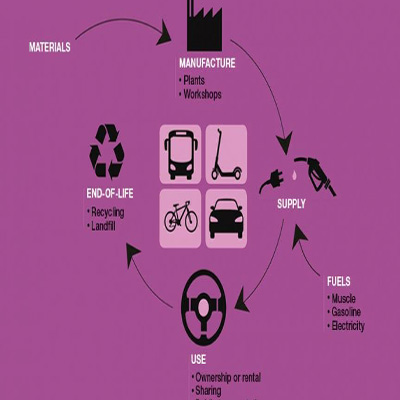Published On: Jun 27, 2016
IMPACT ON BUSINESS
All above issues were affecting the business resulting in loss of productivity and service quality. Various effects of poor PQ that has direct impact on profitability of business are:
- Customer dispatch was seriously affected
- Purchase of costly tools resulting in increased M/C tools
- Too Many Electronics Failures resulting in increased downtime
- Increase in Scrap & Rejection cost
The plant started paying a high cost of power which was adding to their expenses and hitting the bottom line. Poor PQ was affecting business in a negative way and in order to improve business it was imperative for the plant team to improve PQ.
MITIGATION TECHNIQUES ADOPTED BY PLANT
Due to above issues, a detailed power quality audit and a study were carried out to identify the presence of disturbances in power parameter viz voltage, current, and frequency. Following are the various mitigation techniques adopted by plant in a phase-wise manner:
For Load Correction
- The presence of noise was affecting the performance of CNC machines. In order to mitigate it, Isolation Transformers were installed and Neutral to Ground Voltage was measured daily and was found to be less than 2V.
- Due to switching of load, voltage dips were observed when the plant was operating on DG sets. Temporarily, plant changed operating practice to avoid voltage dips. Motors above 50 HP were started first and then power was resumed to the equipment whenever power was supplied through DG set.
- Machine manufacturers incorporated PQ mitigating techniques in the new machines with noise cut off the transformer, filters for drives and even redesigned machines to suit the available power quality.
For Supply
PQ from the grid was a major concern for reliable operation of the plant. As a temporary solution, the plant decided to install voltage stabilizers at an investment of ~2.5 Million to ensure regulated voltage supply to critical loads through DG sets. As there was no improvement of the grid condition, the plant had no option but to invest in captive power plant of 1.9MW at an investment of 45 Million. Also, existing 2 numbers of 310kVA DG sets were replaced with 2 nos. of 1000 kVA DG sets for feeding critical loads.
Energy Savings
- One of the major problem faced by the plant was operating cost of DG sets. Due to increased cost of diesel, energy cost was increasing. Energy cost from DG set was around INR 22 per kWh whereas using captive power plant it was INR 11 per kWh
- In order to reduce operating cost from the captive power plant, the plant ensured 100% usage of SEB power when available.
Other key measures to ensure that plant is protected against other PQ problems:
- To mitigate the effect of Harmonics: Use of 4 core conductors (for strengthening of neutral conductors) in areas like Data Centers which use Single Phase UPS & filters (chokes) at the input and output
- To ensure simultaneous closing of all phases: Use of MCCB in place of conventional Fuse Switches
- Use of Sandwich Bus bar trunking using Copper Cadmium in place of conventional Aluminium Bus bar trunking
- To reduce transients: Maximum Capacitor used to be restricted to 25 kVAR
ADVANTAGES/BENEFITS OF APPLIED MITIGATION TECHNIQUES
By applying above mitigation techniques, the plant invested around INR 325.5 Million. In case, if there were no mitigation measures adopted, there would have been a high cost (Col. E) that plant had to pay annually.
|
Parameter |
Units |
Before |
Now |
In case if mitigation measures were not adopted (E) |
|---|---|---|---|---|
|
Total Consumption |
kWh |
1200000 |
2500000 |
2500000 |
|
DG |
kWh |
840000 |
0 |
1750000 |
|
Captive |
kWh |
0 |
750000 |
|
|
EB |
kWh |
360000 |
1750000 |
750000 |
|
Cost of power generation through |
||||
|
DG |
INR/kWh |
22 |
22 |
22 |
|
Captive |
INR/kWh |
12 |
12 |
12 |
|
EB |
INR/kWh |
7 |
7 |
7 |
|
With SEB as base, annual loss |
INR/year |
151,200,000 |
45,000,000 |
315,000,000 |
Table 2. Avoided annual loss due to various mitigation techniques
From table 2, it can be seen that there has been a significant reduction in annual loss from INR 151.2 Million to INR 45 Million, which otherwise would have been very high if mitigation measures were not adopted (INR 315 Million). Some other key benefits are:
- Meeting Customer Schedule: Timely delivery of the consignment due to improved reliability in operation
- Saving additional working day: Along with the improvement in reliability of operation, a decrease in breakdown time was also realized. This resulted in meeting targets in 6 working days in a week instead of an earlier case of the operation which was 7 days a week. By saving an additional working day, around INR 50 million per year were saved.
- Saving Space: With an installation of new DG sets, critical loads were always supplied through new DG sets. This made voltage stabilizers redundant and were removed. Removal of voltage stabilizers resulted in substantial space saving.
CONCLUSION
TVS-Delphi is a classic example of an industry which faced almost all kind of PQ issues. They faced problems in continuous availability, quality (voltage and frequency related issues) and cost (higher cost for DG or captive power plant).
One of the major reasons to take PQ so seriously was its impact on business. Thus, it can be concluded that poor PQ can cause increased operational cost that directly impacts the profitability of the business. Hence, it is important to adopt righteous mitigation techniques in order to prevent losses in the system.
REFERENCES
(This blog is based on a APQI case study titled “Total power quality management in an automotive component manufacturing unit”. It depicts the case of a unit/plant facing power quality issues due to internal and external factors and highlights various mitigation techniques adopted by the unit to mitigate these issues.)









